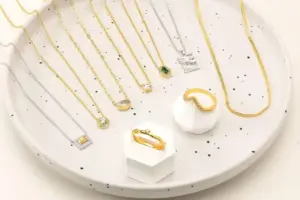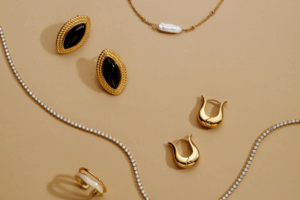The jewelry industry is embracing a transformative shift toward sustainability by recycling precious metals. This innovative approach eliminates the need for frequent mining practices, conserves natural resources, and reduces carbon emissions.
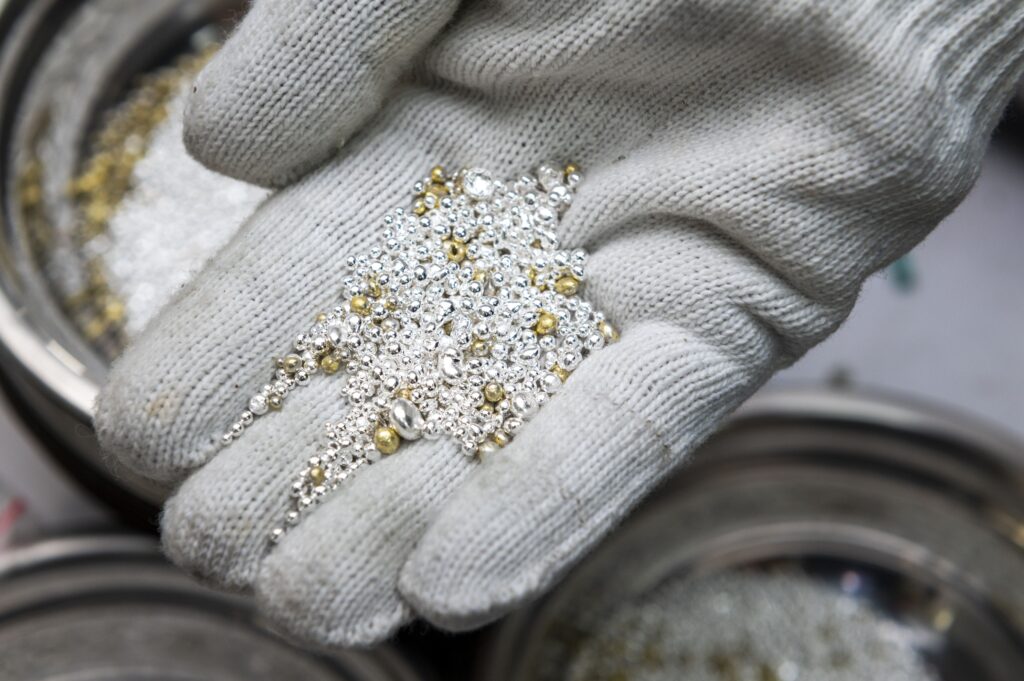
In this post, we will explore the power of recycled metals used in jewelry, showcase Nendine’s tangible practices and utmost efforts in holistic sustainability, and enlighten you on why sustainability is a smart move for every jewelry brand.
What are Recycled Precious Metals?
These are precious metals recovered from existing jewelry, then refined and purified for reuse in new jewelry pieces. They are clinically recycled and restored to their original purity levels, making them indistinguishable from newly mined metals.
Jewelry from recycled materials offers the same beauty, durability, and value as virgin materials, proving that luxury and environmental responsibility can coexist harmoniously in jewelry creation.
Sources of Recycled Metals
- Post-consumer scrap (old jewelry, dental fillings, silverware, etc.).
- Industrial waste (electronics, industrial catalysts, etc.).
- Jewelry production waste (such as waste from wax tree casting).
Common Recyclable Precious Metals Used in Jewelry
What metals can be recycled for making new jewelry products? There are quite a list of them, which includes stainless steel, brass, and man-made metals (like cubic zirconia and moissanite). But these metals are not often used because they have low value of recyclability.
Rather, 3 major precious metals are frequently used for their exceptional recyclability and value through multiple recycling cycles. They are gold, silver, and palladium.
- Gold
Recycled gold jewelry stands as the most recyclable precious metal, capable of continuous refinement without quality degradation. Gold’s high intrinsic value makes recycling economically attractive, with recycled gold commanding as much prices as newly mined gold.
But just like new gold jewelry, recycled gold pieces can tarnish. Gold plated pieces will last for at least 6 months, gold vermeil jewelry can last for 1-2 years, while gold filled can retain its luster for 3-5 years.
- Silver
Silver jewelry offers excellent recyclability, maintaining its lustrous appearance and quality after proper refining. It can be recycled multiple times without losing its essential properties, making it one of the precious sustainable jewelry materials.
Is recycled silver jewelry cheaper? No, recycled silver is not cheaper than non-recycled silver, as it requires additional time and processes to refine.
- Palladium
Palladium represents a highly valuable jewelry recycled material increasingly used in fine jewelry as an alternative to platinum. This metal can be recycled multiple times while retaining its hypoallergenic properties and distinctive white color.

How to Recycle Precious Metals for Jewelry?
Here are the step-by-step process for how to recycle precious metals for jewelry:
Step 1: Collecting
The jewelry recycling process begins with gathering old/used jewelry pieces from several channels, such as production waste, jewelry stores, or consumers looking to dispose/repurpose unwanted items.
Step 2: Sorting
The collected pieces are sorted by metal types and quality. This is a critical step that ensures efficient processing and prevents contamination during subsequent melting and refining stages.
Step 3: Melting
The sorted metals are melted and purified to be ready for new designs. The metals are heated to their respective melting points, allowing them to liquefy and separate from any remaining contaminants.
Step 4: Refining
The molten metals are further refined to transform them into pure, high-quality materials suitable for jewelry production. This step is crucial in determining the quality of the recycled jewelry.
Step 5: Repurposing
Pour the refined metals into prepared molds to craft new jewelry. They can be alloyed with appropriate materials to achieve desired colors and hardness.
Step 6: Final Touches
At this stage, the jewelry is strictly inspected for any flaw. each piece is polished and inspected to ensure it embodies both luxury and durability.

Recycled Materials Practices at Nendine Factory
As a leading manufacturer of recycled metal jewelry, all our production processes are targeted towards sustainability and making the best use of jewelry materials. Here are some of our sustainable practices at Nendine:
Recycling In-House Scrap
We collect production waste and metal dust for in-house closed loop jewelry manufacturing and repurpose leftover materials (such as metals, plastic, stones, and glass). Scraps gathered are recycled back into the system and used to create other magnificent jewelry pieces.
Sourcing Recycled Metals from Trusted Suppliers
We partner with trusted suppliers to source recycled metals like gold, silver, and stainless steel. We also use lab-grown gemstones and ethically reclaimed diamonds. These metals meet quality and sustainability standards, allowing us to reduce reliance on newly mined resources while maintaining the integrity of every jewelry piece we craft.
Extending the Product Life Cycle in Various Ways
At Nendine, our focus is to make the best use of materials, so we put in efforts to extend products life cycle in various ways like:
- Recycling Precious Metals in Our Factory: We disallow the disposal of precious metals after their life cycle. They are collected, recycled, and used to produce new, fine jewelry.
- Selling Non-Precious Leftover Materials: Non-precious leftover materials like brass and stainless steel are responsibly sold to specialized electronics factories and refineries that can effectively recycle them.
- High Utilization of Raw Materials: We pride ourselves with precision cutting of raw materials on exact design needs to minimize waste. The leftover parts are not disposed, rather they are used for smaller jewelry pieces or design elements.
Reworking Returned or Unsold Items
Jewelry brands can deliver their returned goods from customers to us, and we rework them. For example, pearls from unsold pieces can be reclaimed. If some are imperfect, they can be ground down to contribute to the creation of beautiful shell pearls, ensuring the essence of the material is not wasted.
Wide Material Selection for Brands
We have a broad range of materials you can select from to create your recyclable jewelry. This includes stainless steel, gold, and silver with high recyclability. You can also choose from sustainable alternatives like shell pearls, cultured pearls, and lab-grown stones.
Recyclable Packaging
Our sustainability practices extend beyond sourcing of raw materials and production; it includes packaging. We use eco-friendly jewelry packaging like paper-based, FSC-certified boxes, cotton bags, biodegradable pouches, thereby decreasing the use of single-use plastics and materials that are detrimental to the environment.
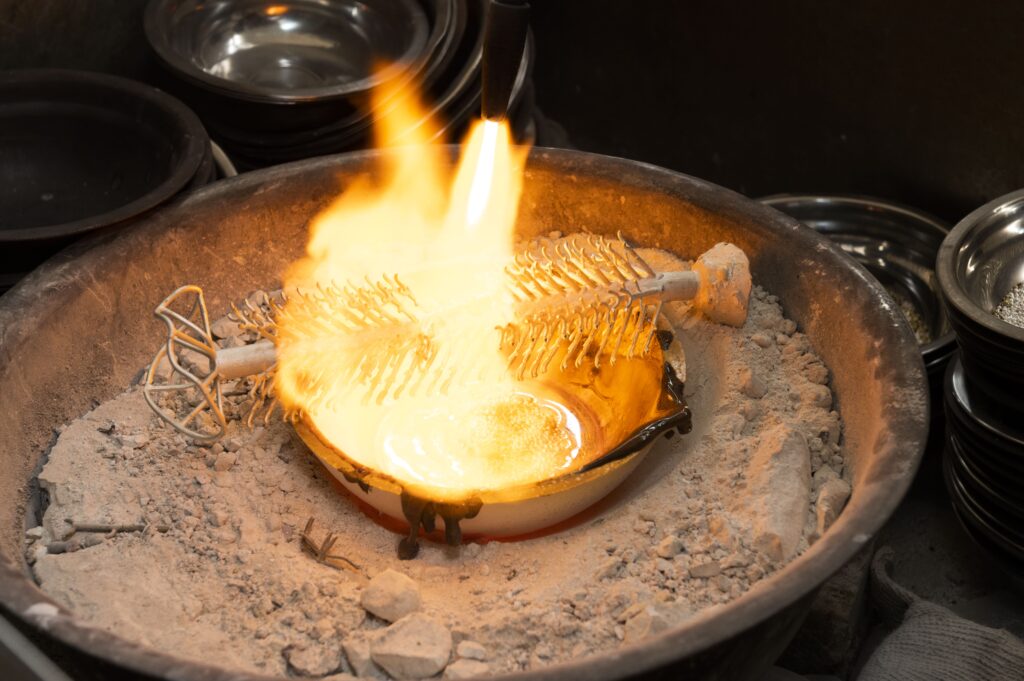
Your Role in the Sustainable Journey: Tips for Jewelry Brand Owners
Whether as a small or big jewelry brand, you have a part to play in this sustainability journey. Here are some tips for you:
Partner with Manufacturers Committed to Sustainability
Partner and buy your jewelry products from manufacturers that have sustainability integrated deep into their core. A good example is Nendine, paying due diligence to the sustainable and ethical practices of manufacturers and also certified with ISO 14001 & BSCI.
Material Choices with Impact
Prioritize using highly recyclable materials like precious metals, cultured pearls, shell pearls, lab-grown stones, and gems. Say no to alloy—it can destroy the properties of the materials and distort their recyclability.
Build a Circular Economy
Become a one-stop shop, rendering both sales, repairs, and take-back services. Don’t just focus on selling jewelries; build a circular economy where customers can bring back their products for repair. And when the products get to the end of their life cycle, they can be taken back and recycled by you.
Switch to Eco-Friendly Packaging & Shipping
Stop using plastics. Switch to eco-friendly and recyclable materials like biodegradable pouches and paper-based packaging. Also, partner with a sustainable logistics company who does well in greener practices like fully packed goods within a track to reduce shipping emission.
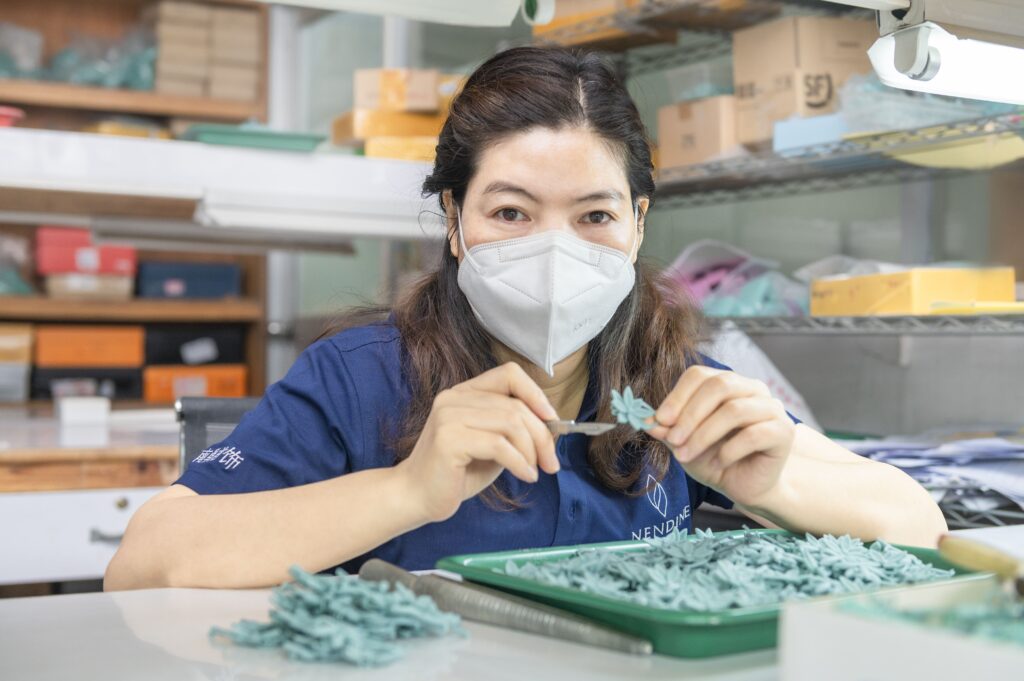
Why Sustainability is a Smart Move for Jewelry Brands
Are you a jewelry business owner and still thinking whether to adopt sustainability in your brand? Here are major reasons why sustainability is a smart move:
- Growing Customer Awareness and Preference
Adopting eco-friendly jewelry materials and sustainable practices can make customers pay attention to how their actions impact the environment, making them show strong preferences for greener products.
- Enhanced Brand Value and Differentiation
Sustainability initiatives create powerful brand differentiation in an increasingly competitive jewelry market. Integrating jewelry from recycled materials into your brand value will make you stand out from competition and easily noticeable by consumers.
- Opportunity to Enter Premium Eco-Conscious Markets
Ethical jewelry brands are leading the charge in retail, with eco-conscious consumers demonstrating strong purchasing power and brand loyalty. Jewelry brands embracing recyclability and sustainability can access this lucrative market segment that prioritizes quality, craftsmanship, and environmental responsibility.
Conclusion: Crafting a Sustainable Future Together
As a sustainable jewelry manufacturer, we try our best to integrate sustainability into our core and will continue to do so. But true sustainability is a shared responsibility between manufacturers and brand owners. Let’s work together to craft a sustainable and conducive future.
FAQs
Will Using Recycled or Recyclable Materials Raise My Costs?
Not always. The price of using recycled or recyclable materials is generally the same as those without recycling. While recycled or recyclable materials take extra time and effort to refine and rework, reducing in-house waste and the appeal to conscious consumers can balance costs.
How to Make Sustainable Jewelry?
Some effective ways to make sustainable jewelry include:
- Using recycled materials
- Reusing discarded materials
- Ethical sourcing practices
- Non-toxic materials and production methods
- Recycled and recyclable packaging
What to Do With Old Gold Jewelry?
Old gold jewelry, especially those that are recyclable should not be disposed. Rather, they should be taken to sustainable jewelry manufacturers like Nendine that support recycling old and used gold products. The jewelry will be recycled and remanufactured into new, fine jewelry.

